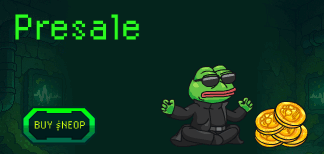The Bitcoin Runes protocol has seen a significant decrease in activity and revenue from fees after the sudden initial increase following the Bitcoin halving.
Although Runes has made progress in the Ordinals protocol, making transactions more convenient and faster, it has not been able to maintain a high level of user adoption.
Despite an initial phase of enthusiasm, the moment of the protocol has faded and the impact on the Bitcoin ecosystem remains to be evaluated. Let’s see all the details below.
Summary
Disappointed expectations for Bitcoin Runes: the debate on the integration of Solana’s memecoins
As anticipated, activity on the Bitcoin Runes protocol has experienced a slowdown in the last week, indicating a lack of significant user adoption, despite a promising start last month.
The Runes protocol has brought further improvements to the Ordinals protocol, making transactions even more convenient and fast.
Ordinal numbers represent a way to embed data in the Bitcoin blockchain, inserting references to digital art in small transactions based on Bitcoin.
The highly publicized Runes were launched after the fourth Bitcoin halving on April 20. Data collected on Dune Analytics indicate that in the first 10 days, the protocol generated over 85,000 token emissions and generated over 3 million dollars in fees.
However, in the last two weeks, all metrics, including fees, new Runes, and user activity, have recorded a decrease of more than 50%.
Since May 1st, only about 5,000 new Runes have been issued, generating just under $100,000 in fees.
Previously, during its peak, Runes led transactions and fees in the broader Bitcoin ecosystem, representing up to 80% of all network activity.
Currently, this share has dropped to 20%.
However, it is important to note that this decline occurred during a period characterized by a general decrease in the market, with the drop in Bitcoin (BTC) prices and the slow growth of alternative tokens.
Factors that may have negatively influenced sentiment towards the new technology.
Expectations and challenges in the world of memecoins on Bitcoin
Runes has captured huge attention on the social platform X before its debut. The creator Casey Rodamor aims to make it a mature protocol for meme coin trading and “degen” traders.
Many industry observers expected the protocol to reflect the thriving ecosystem of meme coins on blockchain like Solana and Base. Likely fueling interest and bets on lesser-known memes.
PUPS, a Runes token, made a big move by emerging and going from less than 10 million dollars in market capitalization to over 150 million dollars in less than a week. It also gained the support of various well-known traders such as BitMEX founder Arthur Hayes.
Various collections and NFT tokens have been launched on Ordinals, and even on Ethereum, before the introduction of the protocol, each aiming to become the largest compilation after launch.
This activity has made Bitcoin-based NFTs stand out above other collections on the usual leaders Ethereum and Solana, with tens of millions of people changing hands in an otherwise scarce market for non-fungible tokens.
However, some skeptics believe that, although Runes may help build the Bitcoin ecosystem, there is still work to be done. In this regard, Ho Chan Chung, marketing manager at CryptoQuant, told CoinDesk the following:
“The success of the Bitcoin L2 project based on OP_Return is doubtful, as the UTXO-based blockchain network is fundamentally different from the smart contract-based network. The current notion of Bitcoin as a combined digital currency and the difference in the fundamental blockchain network are the two major obstacles that Bitcoin L2 projects must overcome. Lightning Network has been able to demonstrate this. However, Ordinals, BRC-20, and Runes all seemed to fail in winning the narrative for now.”


